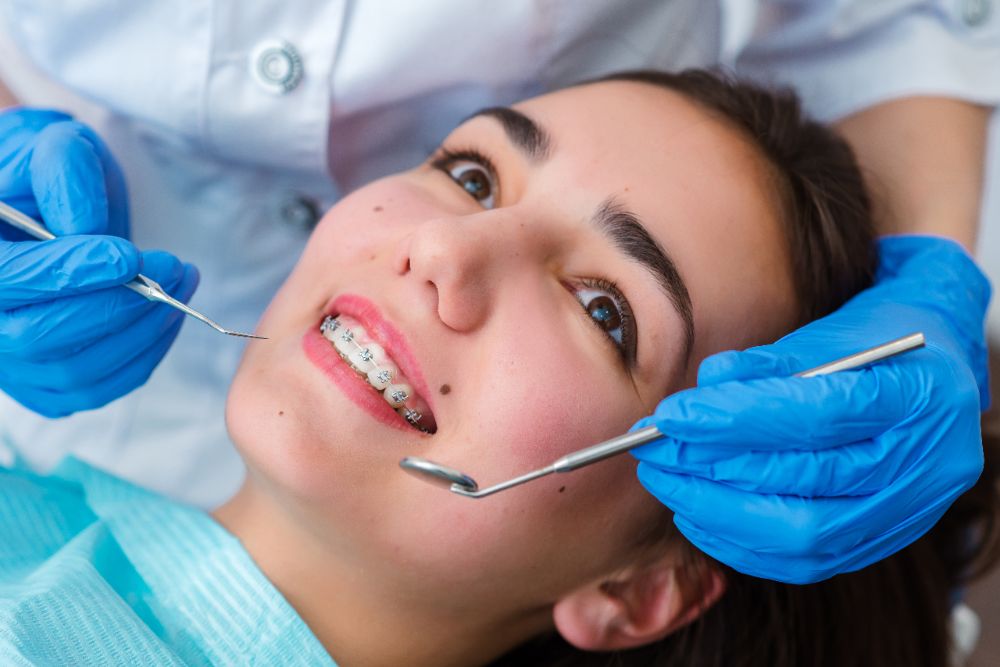Expert Cumming Braces and Aligners: What to Know Before You Go to
Expert Cumming Braces and Aligners: What to Know Before You Go to
Blog Article
Comprehensive Guide to Orthodontics Procedures for Remedying Oral Imbalances
In the realm of orthodontics, the journey to accomplishing a flawlessly aligned smile includes a myriad of treatments customized to fix dental misalignments. From typical dental braces to invisible aligners and even surgical choices, the area of orthodontics supplies a variety of solutions to deal with varying degrees of dental irregularities. Comprehending the details of each treatment, including their devices, advantages, and possible downsides, is crucial in making informed decisions concerning one's orthodontic treatment. As we navigate through the extensive guide to orthodontic procedures for fixing dental misalignments, the intricate details of each technique will certainly unravel, dropping light on the course toward a unified and practical dental alignment.
Orthodontic Procedures Introduction

In addition to clear aligners and traditional dental braces, orthodontists might likewise advise other treatments like headgear, palatal expanders, or retainers to address specific alignment concerns (braces). These treatments are tailored to every person's distinct requirements and might involve a combination of therapies to attain the desired outcomes. Normal adjustments and tracking are critical parts of orthodontic treatment to make sure progression is on track and to make any type of essential modifications along the method. By going through orthodontic treatments, people can not only accomplish a straighter smile however additionally boost their overall oral health and function.
Standard Dental Braces: Exactly How They Work
When thinking about orthodontic treatments for oral misalignments, traditional dental braces stand apart as a time-tested technique for fixing teeth placing. Conventional braces are composed of brackets, cables, and bands that collaborate to apply continual pressure on the teeth, progressively moving them right into the desired placement. The brackets are connected to the teeth using an unique adhesive, and the wires are threaded with the brackets. By changing the stress of the wires, orthodontists can regulate the direction and pressure related to each tooth, directing them right into proper placement over time.
As pressure is applied to the teeth through the braces, the bone surrounding the teeth is reshaped to support the brand-new tooth placements. Patients will certainly require normal changes at the orthodontist's workplace to make certain the dental braces proceed to use the right pressure for efficient teeth motion.
Undetectable Aligners: Advantages And Disadvantages
Unnoticeable aligners provide a convenient and discreet choice to typical dental braces for remedying dental misalignments. These clear, custom-made trays are virtually invisible when put on, making them an enticing choice for individuals looking for an extra visually pleasing orthodontic treatment. One of the key benefits of unnoticeable aligners is their removability, permitting much easier maintenance of dental health compared to traditional dental braces. People can remove the aligners prior to eating or cleaning their teeth, minimizing the danger of food obtaining embeded the appliance and streamlining the cleaning procedure.

Surgical Orthodontic Options
Surgical interventions in orthodontics present viable options for dealing with complex dental misalignments that might not be effectively resolved through conventional orthodontic therapies. While typical dental braces and unseen aligners can deal with several orthodontic problems, specific situations require medical treatment to accomplish ideal results. Surgical orthodontic alternatives are commonly advised for serious malocclusions, significant jaw discrepancies, and instances where the underlying bone framework needs modification to attain appropriate positioning.
One common surgical orthodontic treatment is orthognathic surgical treatment, which entails rearranging the jaws to correct useful problems such as trouble eating or speaking. This surgical treatment is frequently performed in cooperation with an orthodontist who aids line up the teeth before and after the treatment. Surgical orthodontics may additionally involve treatments to expose influenced teeth, eliminate excess periodontal tissue, or improve the jawbone to produce an extra harmonious face profile.
Prior to considering medical orthodontic options, individuals undergo a detailed assessment to establish the necessity and possible benefits of such interventions. cumming orthodontist. While surgery may appear challenging, it can dramatically improve both the function and aesthetics of the smile in situations where standard orthodontic therapies fall short
Retainers and Post-Treatment Care

Failure to comply with post-treatment treatment guidelines can result in regression, where the teeth progressively move back towards their initial settings. Constant retainer wear, excellent dental hygiene, and regular dental exams are essential for keeping the outcomes accomplished with orthodontic surgical treatment and guaranteeing the long-term security of the dealt with oral alignment.
Conclusion
In conclusion, orthodontic procedures offer different options for remedying dental misalignments. Surgical orthodontic alternatives are offered for extra severe imbalances. Overall, orthodontic treatments can effectively enhance oral health and visual look.
As we navigate with the thorough guide to orthodontic treatments for correcting dental imbalances, the intricate details of each technique will certainly unfold, dropping light on the course towards a useful and unified dental positioning. - cumming aligners
One of the most oral implants common orthodontic therapies is the usage of dental braces, which are composed of metal brackets and cables that use mild stress to gradually shift teeth into the preferred placement.When taking into consideration orthodontic treatments for dental misalignments, standard dental braces stand out as a reliable approach for correcting teeth positioning. Additionally, unseen aligners might not be appropriate for complicated orthodontic problems that call for even more substantial teeth activity, as they are typically recommended for mild to moderate cases. see this here Retainers are custom-made orthodontic devices developed to hold teeth in their fixed settings after the completion of orthodontic treatment.
Report this page